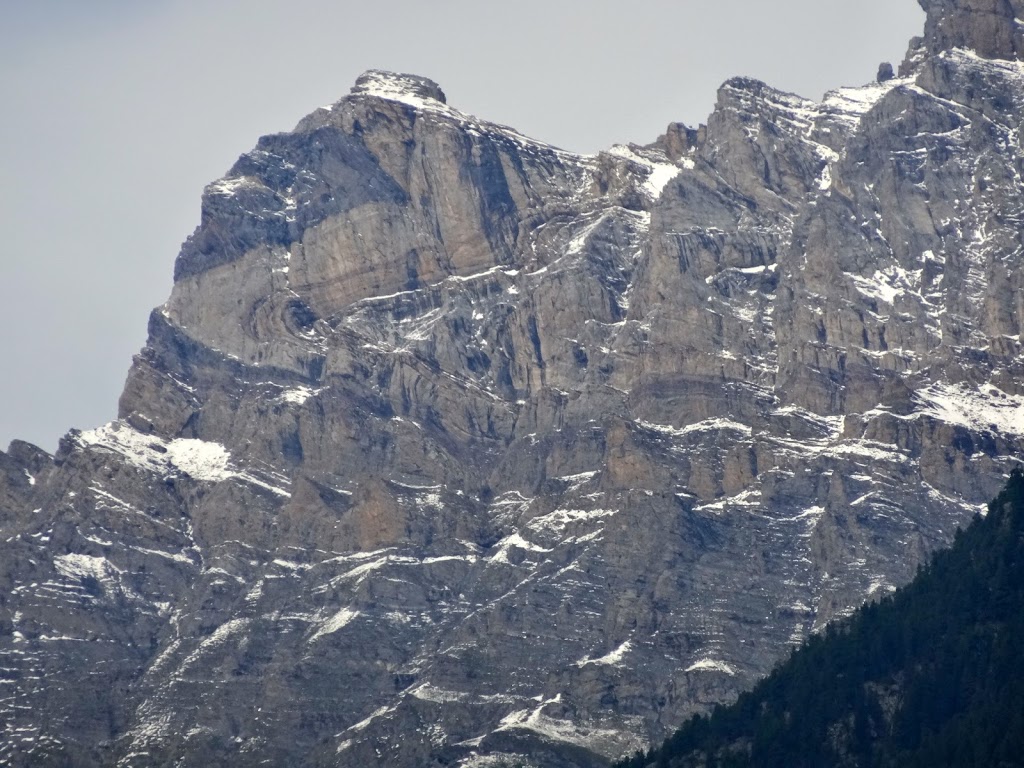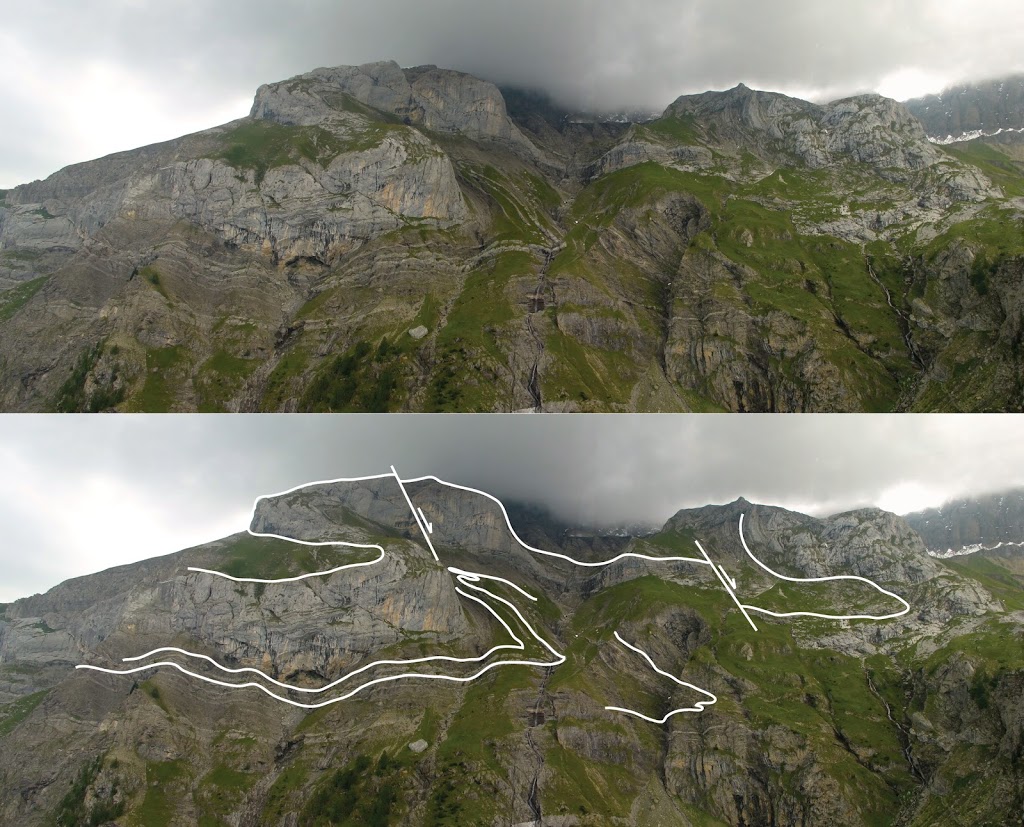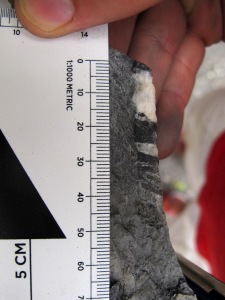First off we should define what is a nappe. A nappes is a package of rock that has been folded and deformed to the point that it is completely allocthonous, that is disconnected from its origin (generally over 5km from the original position). They are characterized by rootless, recumbent, and isoclinal folds. The word nappe is derived from the French word for tablecloth. One of the most recognizable nappes and actually where the word originates is in the Helvetic Nappes of the Suisse and French Alps. Just about every textbook about structural geology features a classic picture of the Helvetic Nappes and more specifically the Morgels Nappe in western Switzerland.
 |
| The Morcles Nappe |
 |
| Closeup of the Morcles Nappe |
In the upper Rhone river valley near the cities of Sion and Martigny, the Helvetic Nappes consist of three nappes stacked on top of each other. These nappes allow for a spectacular reconstruction of the paleoenvironment prior to the formation of the Alps and the emplacement of the Helvetic Nappes. The basal nappe (Morcels) is primarily composed of near shore sedimentary rocks. Above the Morcles is the Diablerets nappe which is made up of rocks deposited on the shallow to deep water slope face. At the top of the stack, the Wildhorn (pronounced “vild-horn”) represents the deepest water pelagic sediments. When we restore these three nappes back to their original position we have a fully restored ocean margin from the shallow water (Morcles nappe), to the continental slope (Diablerets nappe), and the deep ocean basin (Wildhorn nappe).
 |
| Morcles nappe at sunset |
 |
| Lake Salanfe and the Morcles Nappe |
 |
| Looking north towards the Pré-Alpes and the Jura Mountains |
 |
| Les Dents Blanche (the white teeth) above Lake Salanfe |
 |
| Can you see the fold closures in the center of the photo? (click to enlarge) |
 |
| Perfect S-fold at the base of the Wildhorn Nappe |
 |
| Wildhorn Nappe at Saneche |
The Helvetic Nappes were the location of some of the most influential studies in structural geology when geology was still in its youth. In the shales of the Helvetic Nappes are thousands upon thousands of little marine fossils known as Belemnites. These small marine cephalopods were similar to modern day Cuttlefish although these creatures had a calcite shell over their shuttle. When these animals died, their calcite shuttles were deposited on the ocean floor and eventually fossilized. Going way back to 1876, Daubrée noted that in the Helvetic Nappes, these fossils were variably stretched and broken depending their orientation. The voids between the shell fragments were filled with calcite. If the belemnite was oriented in the direction of maximum stress, the belemnite exhibited the maximum degree of strain. Nearly 100 years later, John Ramsay (perhaps the father of modern structural geology) deciphered a method through which the amount of strain within these belemnites could be used to quantify the amount of strain and the direction of maximum stress within the Helvetic Nappes. Near the town of Sion, I visited the outcrop where Ramsay and others first described this phenomena. A group of students calculated the amount of strain in nearly 20 belemnites. The strain measurements were normal distributed varying between 120 and 250% (150% average) of the original length depending on the orientation of the belemnites.



Next week we will end this tour of the Alps with the flysche and molasse basin north of the Alps.
 This work is licensed under a Creative Commons Attribution-NonCommercial-ShareAlike 4.0 International License.
This work is licensed under a Creative Commons Attribution-NonCommercial-ShareAlike 4.0 International License.









![]() This work is licensed under a Creative Commons Attribution-NonCommercial-ShareAlike 4.0 International License.
This work is licensed under a Creative Commons Attribution-NonCommercial-ShareAlike 4.0 International License.


